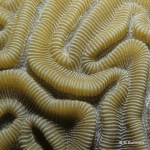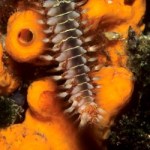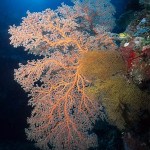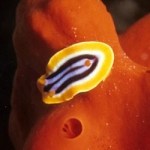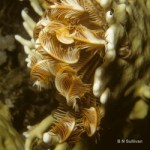Scleractinian corals, also known as stony corals -- or just hard corals -- are the primary reef builders in the oceans. Their polyps secrete calcium carbonate to form a skeleton. A minority of species live as single polyps, but most stony coral species are colonial, and the structures they build 'grow' over time. They form a myriad of shapes: mounds, branches, fingers, plates, and encrustations.
In several previous posts I discussed and displayed photos of a number of so-called soft corals, all of which are octocorals, i.e., their polyps have eight tentacles. Stony corals are…
marine invertebrates
They look like a cross between a caterpillar and a tricked out centipede. They crawl about with considerable agility, they are voracious feeders, and they certainly know how to defend themselves. Meet the Bearded Fireworm (Hermodice carunculata), a free-moving marine Polychaete worm.
This species is widely distributed from the Caribbean, throughout the warmer waters of the Atlantic Ocean (including Florida and the Bahamas), and all the way to the Mediterranean Sea. All of the images in this post were captured in the Mediterranean, in the waters around Cyprus and Greece.
H. carunculata is…
The pretty creatures pictured here look like anemones, but they are not true anemones. They are Cerianthids, commonly referred to as 'tube anemones', which are taxonomically quite distinct from true anemones.
Cerianthids and true anemones do belong to the same phylum, Cnidaria, and the same class, Anthozoa, but tube anemones belong to the subclass Ceriantipatharia, a taxon that also includes the so-called 'black corals' (Antipatharia).
One of the visible features that distinguishes Cerianthid tube anemones from true anemones is the morphology of their tentacles. The macro photo below…
Sea fans are among the most beautiful sights seen by divers. Gorgonian sea fans are Cnidarians that build colonies in branching formations that usually are fan-shaped, thus the common name.
Like the Nephtheid soft corals I wrote about recently here on Photo Synthesis, Gorgonians are octocorals: each polyp has eight pinnate tentacles which it uses to capture nutrients suspended in the water column. They are seen most often on reef crests, or jutting out from drop-offs or steep banks in locations where natural currents will sweep plankton and other organic nutrients across the polyps'…
Nudibranchs -- marine snails without shells -- make wonderful photo subjects for the macro photographer. They are small, colorful, and they move slowly (as snails are wont to do). That last characteristic is particularly welcome. Most fishes are in motion almost constantly, and non-sessile invertebrates tend to scurry hither and thither. It's nice to find a subject that is not only photogenic, but doesn't turn tail or flat out disappear before the photographer can focus the camera's lens!
It's always interesting to find out and record which critters feed on what. Here are some macro…
Everyone knows that some terrestrial animals are active primarily at night and sleep most of the day, while others go about their business during daylight hours and rest when it's dark. For some reason, many people are surprised to learn that the same thing holds true for animals that live in the sea.
One of the many marine animals that works the night shift is the crinoid species pictured here: Lampometra klunzingeri, a member of the Mariametridae family. During daylight hours, these crinoids hide in crevices in the reef. Shortly before sunset, like clockwork, they emerge from their…
